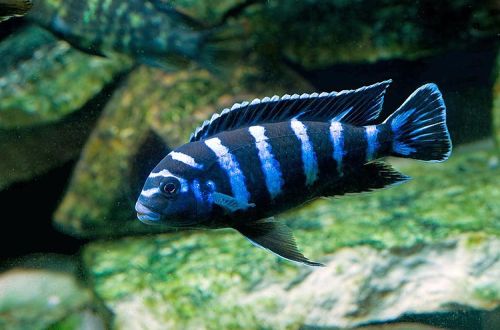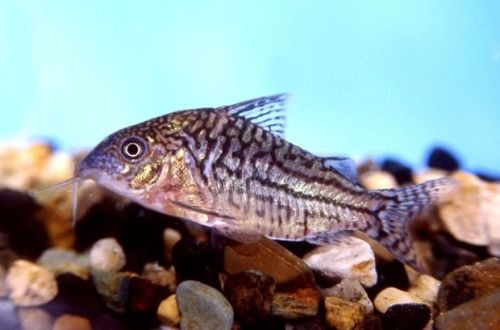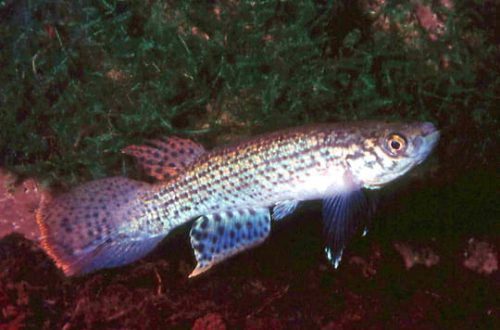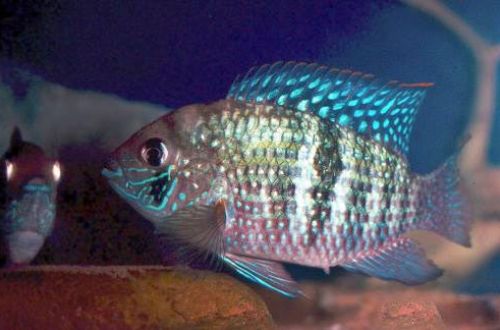
Akara blue
Akara blue or Akara blue, scientific name Andinoacara pulcher, belongs to the Cichlidae family. This species has been popular in the aquarium hobby for many years due to its ease of maintenance and breeding. Unfortunately, most fish kept in home and commercial aquaria are much paler than their wild counterparts. The main reason is hybridization and inbreeding.

Contents
Habitat
Occurs from a limited part of Venezuela near the coast and islands of Trinidad and Tobago (South America). It lives in a variety of aquatic environments, from muddy backwaters of rivers flowing through tropical forests to clear streams on hillsides.
Brief information:
- The volume of the aquarium – from 100 liters.
- Temperature – 22-28°C
- Value pH — 6.5–8.0
- Water hardness – soft to hard (5-26 dGH)
- Substrate type – sandy
- Lighting – any
- Brackish water – no
- Water movement – light or moderate
- The size of the fish is 13–15 cm.
- Meals – any
- Temperament – peaceful
- Content in a pair or group
Description
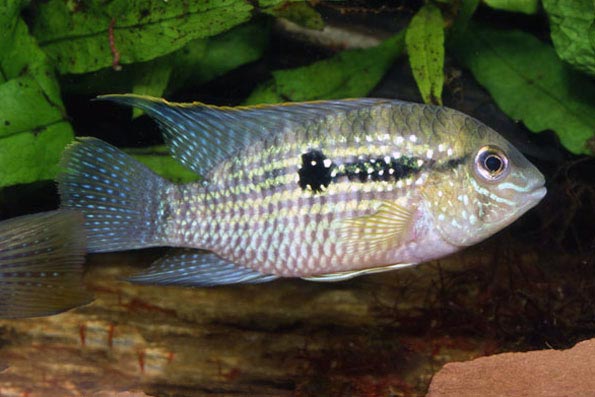
Adults reach a length of about 13-15 cm. Although the coloration of the Blue Akara sometimes varies significantly between individuals, the overall range still contains a blue and blue tint. The body also has a characteristic dark mark in the form of a spot in the middle and a stripe stretching towards the eyes. Males have pointed dorsal and anal fins, females are smaller and somewhat rounded.
Food
Akara blue refers to carnivorous species. The basis of the diet should be protein food from pieces of mussels, shrimps, earthworms, bloodworms. Specialized freeze-dried products from well-known manufacturers can be a great alternative if you don’t want to mess around with live or frozen food.
Maintenance and care, arrangement of the aquarium
The minimum size of the aquarium for one pair of fish starts from 100 liters. The design uses a sandy soft substrate, several shelters in the form of snags, floating plants, which will also serve as an additional means of shading. Rooting live plant species are not recommended as they will be damaged or uprooted by vigorous acars. The unpretentious Anubias, Echinodorus and Java fern have chances for normal growth. The lighting level is subdued.
Despite the diverse habitat in nature, the fish is nevertheless very sensitive to water quality. High concentrations of nitrogenous compounds adversely affect the well-being of fish and can have serious consequences for their health. Therefore, an important condition for successful maintenance is a productive filter with effective biological filtration, as well as regular renewal of part of the water with fresh and timely cleaning of the soil.
Behavior and Compatibility
Peaceful calm species, goes well with other fish of similar size from among the South American cichlids, characins, Corydoras catfish and others. It is worth noting that smaller neighbors can accidentally become the prey of the carnivorous Akara.
Breeding / breeding
This is one of the easiest cichlids to breed in a home aquarium. During the mating season, adult male and female form a pair and occupy a certain area / territory at the bottom. As a spawning ground, flat stones or wide leaves of plants (live or artificial) are used. The female lays about 200 eggs and stays nearby for protection. The male swims away and “patrols” the territory from strangers. The incubation period lasts about 28–72 hours, after another 3 days the fry that have appeared will begin to swim freely in search of food, but for another couple of weeks they will not leave the territory protected by the male and remain next to the female.
If there are several fish in the aquarium and it is small (100 liters), then it is advisable to spawn in a separate tank, since during the mating season the male can be aggressive, protecting the offspring. The stimulus for spawning is soft, slightly acidic water with a temperature of about 28°C. Smoothly bring the water parameters to the appropriate values and soon expect the start of spawning.
Fish diseases
The main cause of most diseases is unsuitable living conditions and poor-quality food. If the first symptoms are detected, you should check the water parameters and the presence of high concentrations of hazardous substances (ammonia, nitrites, nitrates, etc.), if necessary, bring the indicators back to normal and only then proceed with treatment. Read more about symptoms and treatments in the Aquarium Fish Diseases section.



